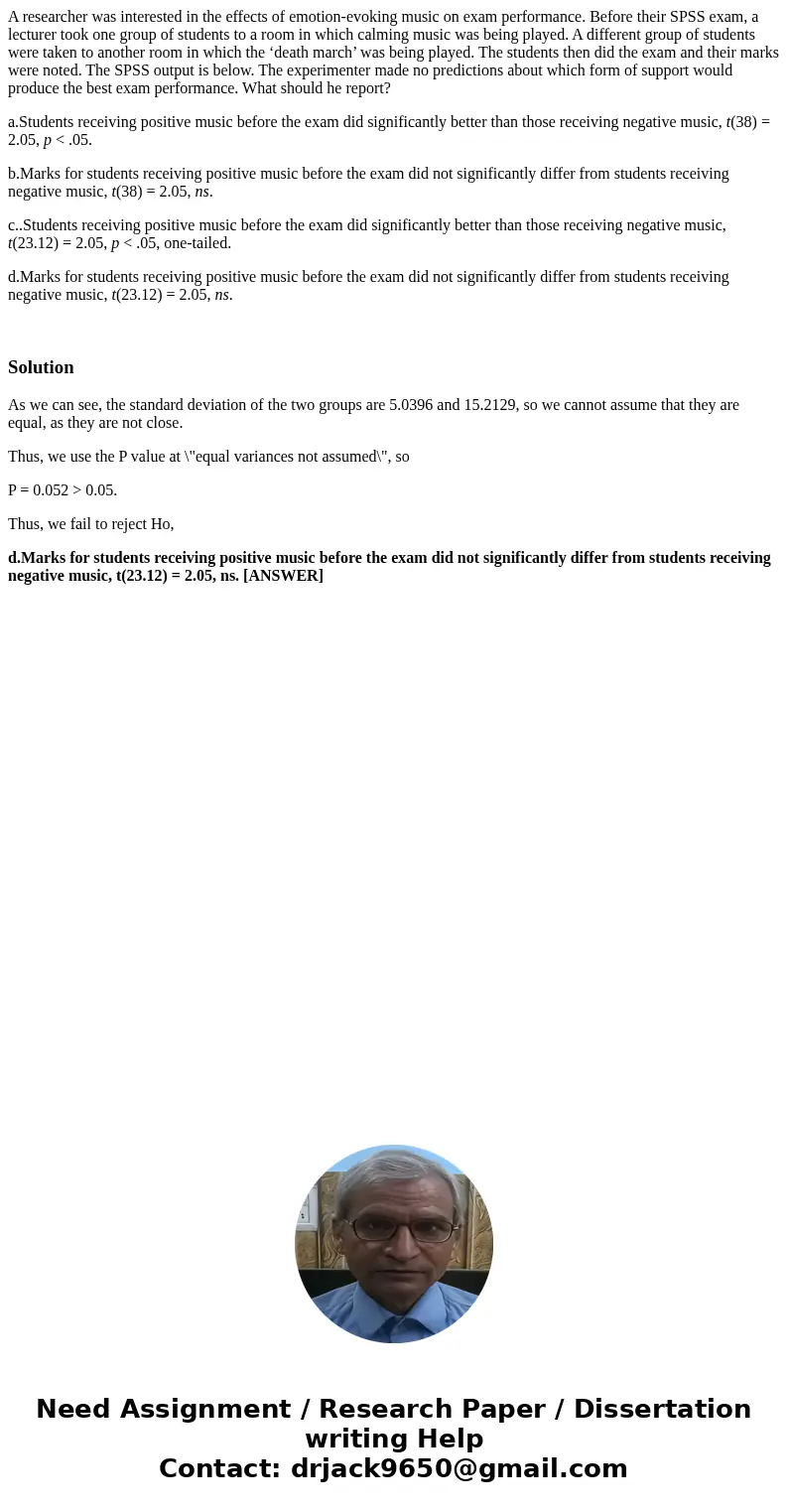A researcher was interested in the effects of emotionevoking
A researcher was interested in the effects of emotion-evoking music on exam performance. Before their SPSS exam, a lecturer took one group of students to a room in which calming music was being played. A different group of students were taken to another room in which the ‘death march’ was being played. The students then did the exam and their marks were noted. The SPSS output is below. The experimenter made no predictions about which form of support would produce the best exam performance. What should he report?
a.Students receiving positive music before the exam did significantly better than those receiving negative music, t(38) = 2.05, p < .05.
b.Marks for students receiving positive music before the exam did not significantly differ from students receiving negative music, t(38) = 2.05, ns.
c..Students receiving positive music before the exam did significantly better than those receiving negative music, t(23.12) = 2.05, p < .05, one-tailed.
d.Marks for students receiving positive music before the exam did not significantly differ from students receiving negative music, t(23.12) = 2.05, ns.
Solution
As we can see, the standard deviation of the two groups are 5.0396 and 15.2129, so we cannot assume that they are equal, as they are not close.
Thus, we use the P value at \"equal variances not assumed\", so
P = 0.052 > 0.05.
Thus, we fail to reject Ho,
d.Marks for students receiving positive music before the exam did not significantly differ from students receiving negative music, t(23.12) = 2.05, ns. [ANSWER]

 Homework Sourse
Homework Sourse